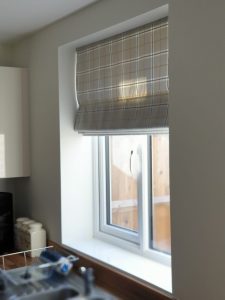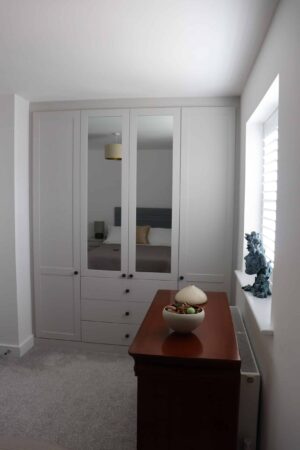The Best Way to Keep Warm During the Colder Months
When the temperature drops, the quickest win is to keep you warm first.
Think of your body like a little radiator – trap the heat you’re already making. Thin layers beat one heavy jumper because they create pockets of warm air. Natural fibres like wool and cotton help regulate temperature and wick away moisture so you don’t feel clammy.
Cosy socks and slippers stop heat escaping through the floor, and a lightweight blanket over your lap works wonders if you’re at a desk or on the sofa.
A hot drink raises core temperature briefly, while a hot-water bottle or microwaveable wheat bag provides targeted warmth that costs pennies to run. If you’re sitting still for long stretches, consider a low-wattage heated throw with an auto-off timer; it can be more efficient than cranking up the whole house.
Smart heating habits that actually save money
Central heating doesn’t need to be “all or nothing.” If you have a programmable thermostat, schedule the heating to come on a little before you wake and switch off shortly before bedtime.
Keeping your living areas around 18–20°C and bedrooms a couple of degrees cooler is a comfortable, cost-aware balance for most households. Thermostatic radiator valves (TRVs) are heroes – set rarely used rooms lower and close the door, so you’re not paying to heat empty space.
If you have a combi boiler, a quick annual service keeps it efficient; likewise, bleeding radiators to remove trapped air helps them deliver heat properly. Shorter heating bursts that maintain an even temperature typically use less energy than extreme peaks and troughs, which force your system to work harder.
Draught-proof the usual suspects
Cold air sneaks in through surprisingly small gaps. The good news? Draught-proofing is cheap, quick and satisfying.
Self-adhesive foam or rubber strips around doors and windows take minutes to fit. A simple brush strip under external doors stops icy under-drafts. For letterboxes, an internal flap or brush guard can make a notable difference.
If your chimney is disused, consider an inflatable chimney balloon or a removable draught excluder (just remember to take it out before lighting any fire). Older floorboards? A clear, flexible filler between boards helps stop whistling winds from the void below.
These are all low-effort, high-impact jobs that you can complete in an afternoon, and you’ll feel the effect immediately.
Use window dressings to lock in heat
Windows are where warm air often says goodbye. Layering makes a real difference here too.
Thermal-lined curtains that close snugly to the wall reduce heat loss, particularly if they reach the floor and overlap the window frame. Roman blinds with a thermal lining help create a sealed barrier in compact spaces, while cellular (Duette) blinds trap air in their pockets, acting a bit like a padded jacket for your glass.
If you have shutters, tilt the louvres to reduce drafts at night and open them fully during the day. Whichever route you take, the ritual of “blinds up, sun in; blinds down, heat stays” becomes a free daily boost.
Just avoid blocking radiators with heavy curtains – let the warm air circulate.
Insulation quick wins (that don’t require a renovation)
Insulation usually conjures visions of lofts and cavity walls – and yes, if you can, those are superb long-term investments. But there are smaller steps, too.
A thick rug on bare floors reduces conductive heat loss and instantly makes a room feel cosier underfoot. Reflective foil panels behind radiators on external walls bounce warmth back into the room instead of letting it seep outside.
If loft hatches are draughty, a simple weatherstrip around the frame and an insulated cover make a surprising difference. Even rearranging furniture helps: placing a sofa away from a cold external wall and not directly in front of a radiator helps the heat spread more evenly.
Cook, shower, breathe – without inviting mould
Everyday life creates moisture. Warm bath steam, simmering pans and even breathing add water to your indoor air, which can condense on cold surfaces and invite mould. The trick is controlled ventilation.
Use extractor fans while cooking and showering, and keep the lids on pots to reduce steam. Open trickle vents or crack a window for 5–10 minutes after high-moisture activities to replace damp air with drier, cooler air that’s easier (and cheaper) to heat.
Keep furniture a little away from external walls so air can move behind it. A small, efficient dehumidifier can be a great ally in winter, making rooms feel warmer at lower temperatures by removing excess moisture.
Heat the “you spaces” first
Not all square metres are equal. Focus heat where you spend time: the sofa corner, the home-office nook, the dining area. Zoning your heating with TRVs is one approach; another is tactical comfort.
A high-back chair keeps warmth around your neck and shoulders. A throw over the sofa and a plush rug under your feet transform a chilly corner into a snug sanctuary. In a home office, a heated seat pad or under-desk mat can keep you toasty without blasting the whole house.
Think like a lighting designer – layer task, accent and ambient warmth where it matters most.
Clothing and movement: the unsung heroes
Sometimes the most effective solutions are the simplest. Swap thin cotton tees for a thermal base layer under everyday clothes. Add a gilet or cardigan so you can adjust quickly as activity changes.
If you’re working from home, get up once an hour and stretch or do a quick lap of the stairs; movement boosts circulation and helps you feel warmer. For evenings, a short burst of light household activity – tidying, prepping tomorrow’s lunch, folding laundry – adds a gentle internal “warm-up” before you settle in.
Bedroom comfort that doesn’t cost the earth
Sleep is better when the air is cool and the bed is warm. Layer your bed like your outfit: a breathable cotton sheet, an insulating duvet with a suitable tog rating for winter, and a blanket you can add or remove.
A hot-water bottle at your feet or a low-setting electric blanket for fifteen minutes before lights out makes a world of difference. Keep pyjamas breathable but insulating – brushed cotton and merino blends are excellent.
If mornings feel frosty, place a robe and slippers within reach so the first minute of your day isn’t a shock to the system.
Low-cost tech and sensible safety
Smart thermostats, radiator thermostats and simple plug-in timers can trim waste by turning heat down automatically when you don’t need it.
If you use any portable heaters, treat them as spot-warmers rather than a primary heat source, and always follow safety guidance: stable surfaces, clear of curtains and furniture, and never left unattended.
If you have any appliance that burns fuel (including a log burner), install a carbon monoxide alarm and test it regularly. Safety and savings go hand in hand – well-maintained equipment runs more efficiently and gives peace of mind.
The hot water question
Hot water can quietly add to winter bills. If you have a cylinder, check the thermostat is set sensibly – hot enough to be safe and comfortable but not excessive.
Shorter showers with an efficient showerhead reduce both water and energy use. In the kitchen, a bowl for washing up typically uses less hot water than running the tap, and pre-soaking tough dishes saves time and heat.
Tiny tweaks, repeated daily, become noticeable savings by month’s end.
Little rituals that make a big difference
Create a couple of “warmth rituals” to anchor your day. Throw curtains wide as soon as it’s light to catch free solar heat, then close everything as dusk falls to create a snug barrier.
Do a quick evening sweep: doors closed, draught excluders in place, blankets within reach, timer set. Keep a basket with warm socks, a soft jumper and a throw next to the sofa so comfort is easy, automatic and, importantly, habitual.
Good habits are the cheapest insulation of all.
Myths to ignore, truths to keep
It’s tempting to believe that leaving the heating on low all day is cheaper than turning it on and off. In most homes, that’s a myth – maintaining heat when nobody’s using it wastes energy.
Another misconception is that electric heaters are “cheap because they’re small.” They’re convenient but usually more expensive per unit of heat than gas central heating, so use them sparingly and strategically.
The truths worth keeping are simple: reduce drafts, trap heat at windows, heat only the spaces you use, and keep moisture in check.
A final word: cosy, not costly
Staying warm through winter doesn’t have to be an expensive, all-or-nothing battle. Layer yourself like a pro. Teach your heating to work with your day, not against it. Close the gaps where cold sneaks in, and give your windows a proper winter coat in the form of lined curtains, blinds or shutters.
Keep moisture under control, prioritise the spots where you spend time, and make warmth a series of small, consistent choices rather than one big, costly blast.
Do these things and you’ll find that comfort rises, bills fall, and winter becomes something to enjoy – hot cuppa in hand, slippers on, home feeling exactly as it should: warm, welcoming and wonderfully yours.
Should you like any additional information about any of our product ranges at Fraser James Blinds, then don’t hesitate to contact us. Our team is always on hand to help. Alternatively, you can also arrange a home visit at a time that is convenient for you.









